13 Striking Facts About the Great Barrier Reef — One of the World’s Natural Wonders
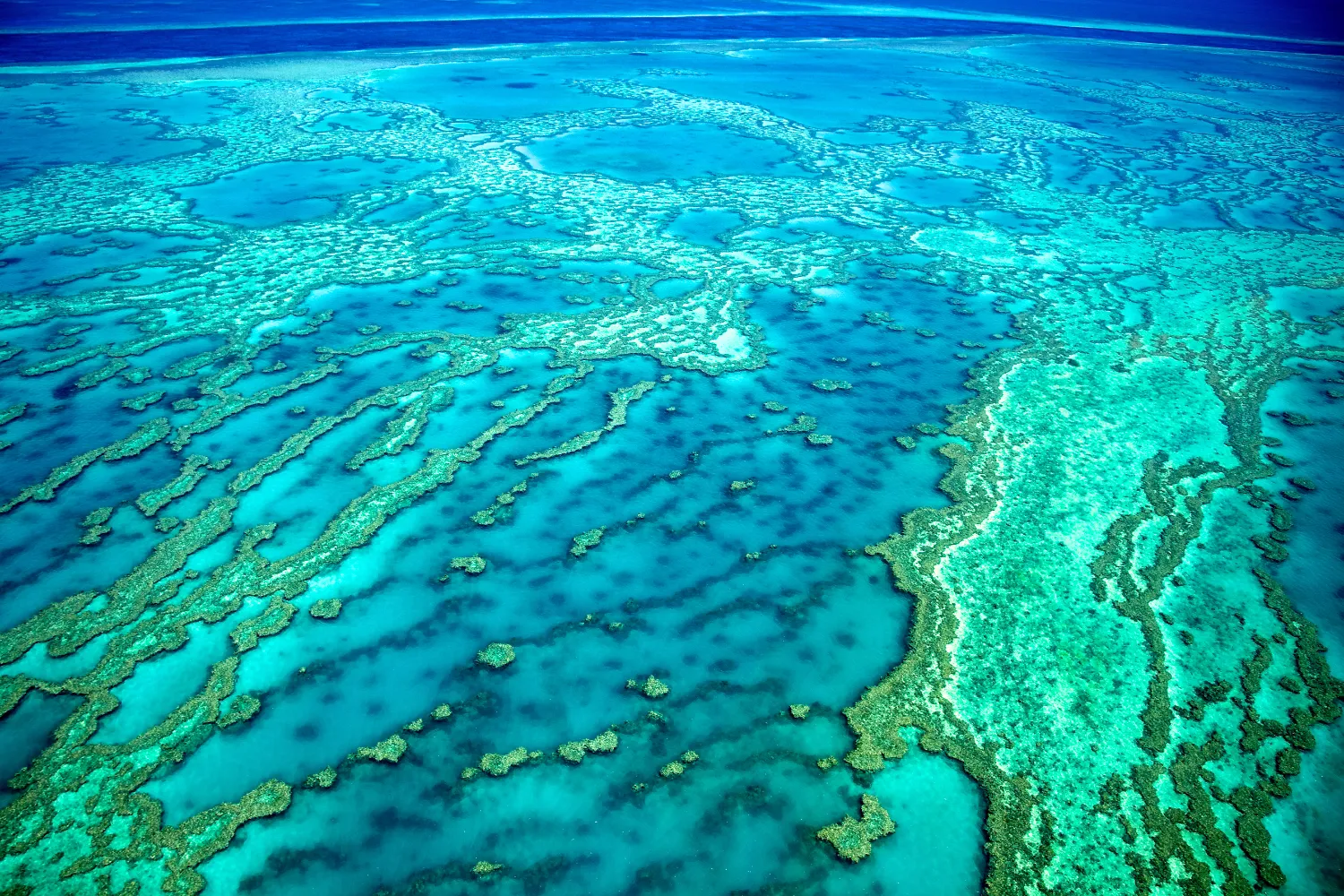
Updated On: November 25, 2023 by Raghda Elsabbagh
Up there from space, patched on planet Earth, lies a natural canvas, an iconic landmark in the Pacific, just off the northeastern coast of Australia – The Great Barrier Coral Reef. Stretching all the way from Cape York to Bundaberg, it is recognised as, without rival, the most colossal living ecosystem on the planet.
It consists of 3000 individual reef systems, 900 jaw-dropping tropical islands with golden beaches, and remarkable coral cays. The reef is so spectacular that it won 2 accolades; one obviously wasn’t enough for its awe-striking beauty. No wonder this reef makes it to the “7 Natural Wonders of the World” list. So, let’s dive in and take a glimpse into 13 things that will fascinate you about this bucket-list-worthy, biodiverse pocket of life on Earth.
1. It is the Biggest Reef in the World; You Can See It From Outer Space!
Pioneering the Guinness Record for being the world’s hugest, the Great Barrier Reef extends for 2,600 km and crowns an area of about 350,000 km2. If numbers can’t make you visualise how vast it is, then imagine the area of the UK, Switzerland and the Netherlands combined. The reef is even bigger than that! If geography isn’t your thing, then the Great Barrier Reef is the same size as 70 million football fields! And to further awe you, only 7% of the reef is used for tourism purposes, leaving endless stretches of deep waters and fringing reefs underexplored; that’s how humungous the reef is!
It’s overwhelming how the reef is the only structure made by living organisms that is visible to the naked eye from space. Space explorers are lucky enough to marvel at the breathtaking masterpiece, where the reef’s golden island beaches contrast with the shallow turquoise waters and the navy blues of the deep waters, a mesmerising natural canvas.
Even though the Great Barrier is still the biggest reef today, its size now is only half of its size in the 1980s, unfortunately, due to the bleaching events brought about by pollution. Nevertheless, the Australian government and international NGOs are exerting immense efforts to protect and conserve the Great Barrier.
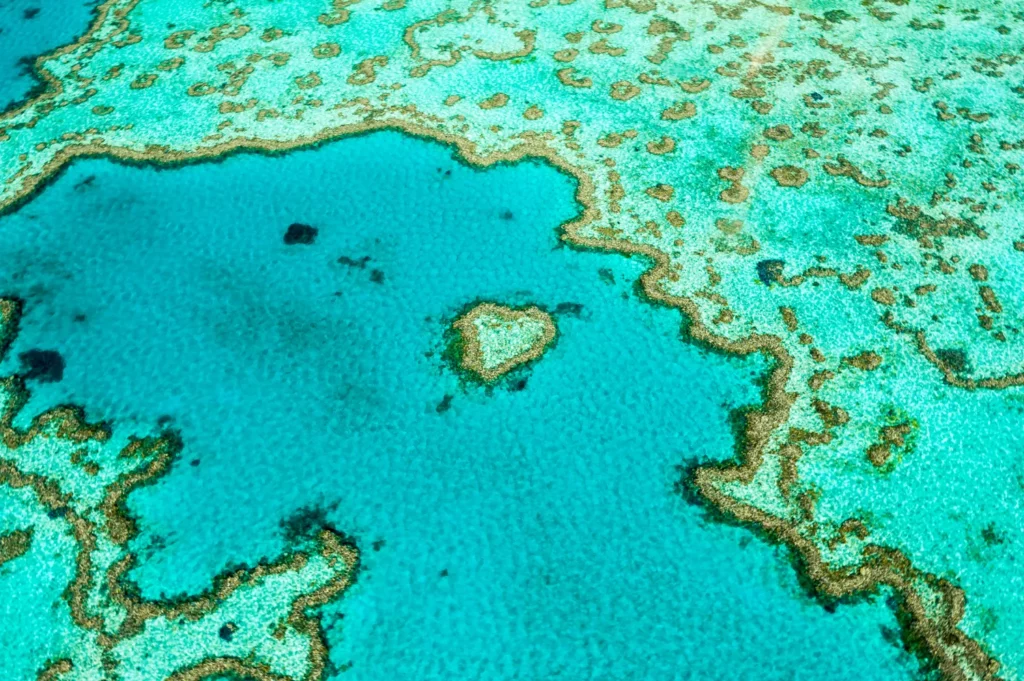
2. The Great Barrier Reef is Incredibly Prehistoric
It’s believed that the reef existed 20 million years ago since the beginning of time, hosting some of the most ancient coral generations. Generation after generation, adding new coral layers on top of older layers till we got one of the gigantic living ecosystems on Earth.
3. The Reef is in the Only Place on Earth where Two UNESCO World Heritage Sites Coincide
One of the rarest natural occurrences is finding two UNESCO World Heritage landmarks nestled together in the same region on the map — the Great Barrier Reef and the Wet Tropics Rainforest. Considered to be the oldest tropical rainforest on the planet since dinosaurs roamed Earth, the Wet Tropics is a vast stretch of green wilderness extending along the northeast coast of Australia and is nothing less than breathtaking. In that spot of Earth, 2 prehistoric pockets bursting with life unite to multiply the charm, where marine life embraces the shores of terrestrial tropical life.
4. The Great Barrier Reef Houses One-Third of the World’s Coral
The Great Barrier Reef comprises a kaleidoscope of more than 600 species of soft and hard coral, showcasing a vibrant tapestry of colours, patterns, and textures. From the intricate branching formations to the delicate, swaying sea fans, each coral species is a masterpiece. The reef is a testament to the jaw-dropping wonders of nature and a reminder of the need to protect and preserve this fragile underwater treasure.
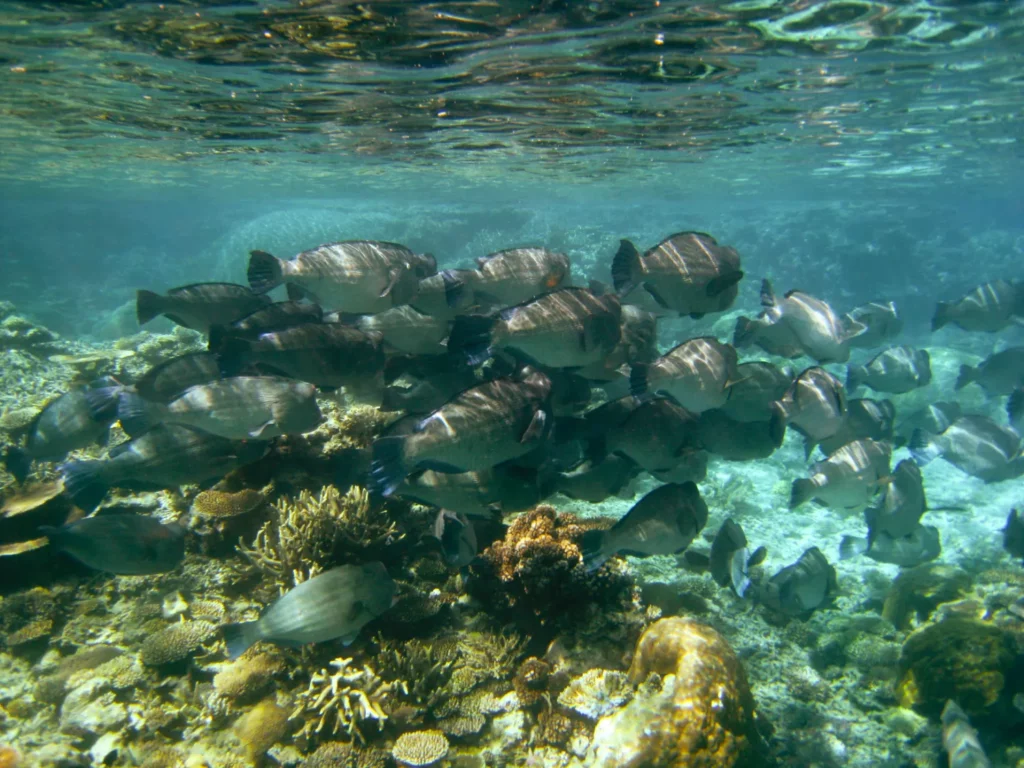
5. The Great Barrier Reef is Like a Marine Playground Teeming With LIFE
It’s not just the extraordinary number of coral species that makes the Great Barrier Reef so mesmerising. Within its vast expanse, this magnificent ecosystem is a mosaic of all sorts of unique marine life. From whales and tortoises to fish and underwater snakes, attempting to state all species here would be very challenging, but we will get you acquainted with some of them.
More than 1,500 species of fish consider this stretch of the ocean home, and probably passionate divers would call it home too! This huge number makes up nearly 10% of the planet’s fish species. It makes perfect sense when it’s about an area equivalent to 70 million football fields to bustle with all types of fish. But in fact, having that number of fish confined in such a small area compared to the area of Earth sheds light on the massive importance of this reef. The most spotted fish are usually the clownfish, like Nemo; blue tangs, like Dory; butterflyfish, angelfish, parrotfish; reef sharks and whale sharks. Many of the fish rely on the corals as habitat.
The reef also embraces 6 of the world’s 7 species of marine turtles, all of which are endangered. Moreover, 17 species of sea snakes and 30 species of whales, dolphins, and porpoises reside in the reef, including the humpback whale and the endangered Humpback Dolphin. It is always a pleasure if you spot one of these playful, friendly and curious marine mammals swimming by as you dive.
One of the most important dugong populations also inhabits this region. The dugong is the manatee’s relative, and it is the last surviving family member. Identified as the only strictly marine, herbivorous mammal, it is endangered, with the reef holding about 10,000 dugongs.
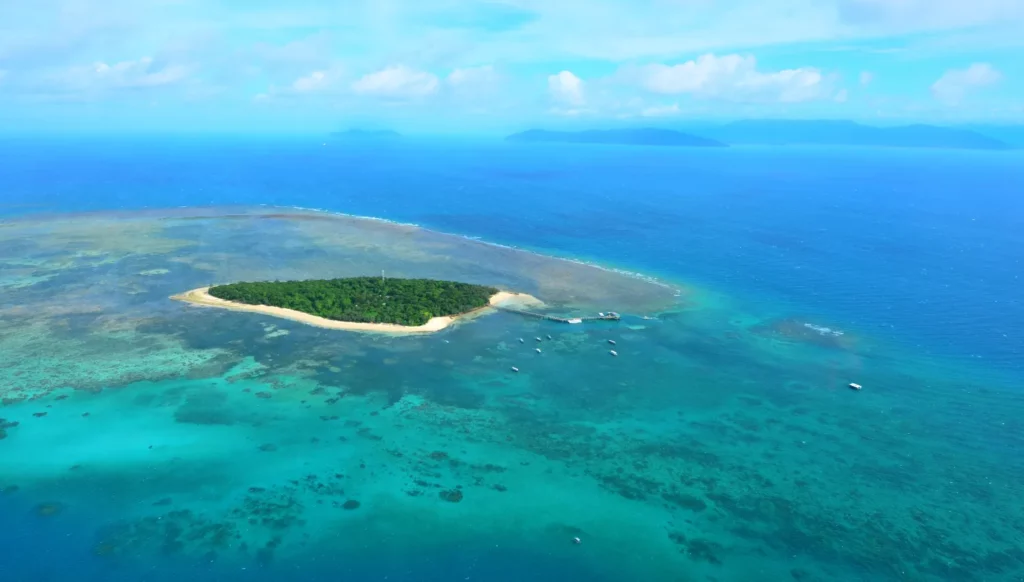
6. Not all Life is Below the Water
Apart from the captivating underwater idyllic scenes, the islands of the Great Barrier Reef provide a habitat for over 200 bird species. They are a significant spot for bird mating, attracting up to 1.7 million birds, including the white-bellied sea eagle, to the region.
Saltwater crocodiles, known as the world’s largest living reptiles and land-based predators, also dwell near the shores of the Great Barrier Reef. These creatures can grow up to 5 metres in length and possess the most powerful bite among all living animals. Since these crocodiles are primarily found in brackish rivers, estuaries, and billabongs on the mainland, sightings near the reef itself are rare.
7. It wasn’t Always Wet in the Great Barrier Reef
Back in time, more than 40,000 years ago, the Great Barrier Reef wasn’t even a marine ecosystem. It was a flat plain stretch of land and forests hosting animals that lived on Australian premises. At the end of the last Ice Age, specifically, 10,000 years ago, the ice glaciers of the planet’s poles melted, and the Great Flood occurred, raising the sea levels and shifting entire continents. Consequently, Australia‘s low-lying coast, including the Green Barrier region, was submerged.
8. The Reef is Migrating South
As a result of the continual rise of ocean water temperatures by global warming, the coral reef and all creatures are slowly migrating south towards the New South Wales coast in search of cooler waters.
9. “Finding Nemo” was set in the Great Barrier Reef
Finding Nemo, Disney’s masterpiece Pixar movie, and its sequel, released in 2003 and 2016, respectively, were actually set in the Great Barrier Reef. All aspects of the movies were portrayed from the real-life reef, such as the anemones that was Nemo and Marlin’s home and the corals featured in the film. Green sea turtles, which were portrayed by Crush and Squirt characters, are also one of the significant populations in the reef.
10. The Reef Flourishes Australia’s Tourism Industry
The Great Barrier Reef, this slice of paradise, lures people from all walks of life, attracting more than 2 million tourists per year. This generates about $5-6 billion per year, and these much-needed funds greatly contribute to the research and protection of the reef. The Australian Government and conservationists have made the reef a protected area, and it was called the “Great Barrier Reef Marine Park” and was established in 1975.
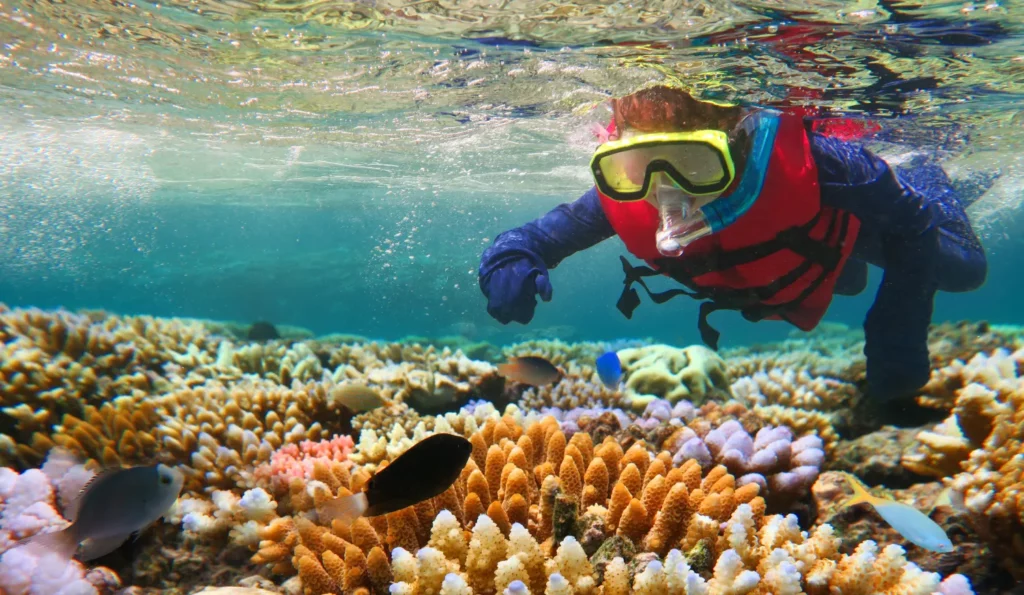
11. Having Fun on the Reef is Inevitable
Adventures and activities in the reef are not a choice; but rather a way of life. You can observe this natural canvas from the sky to completely grasp the reef’s sheer magnitude. After taking your feet to the ground, enjoy dipping your toes into the golden sands, walking on the beach, or sailing across its pristine waters. You might witness turtles’ hatchlings taking their first steps towards the ocean. You can also try fishing tours, rainforest tours, and good local food.
Then, it is time for a splash. You can go scuba diving or snorkelling, where you will lose yourself to the spectacular hotbed of marine life. Renowned for offering some of the best diving spots in the whole world, the Great Barrier Reef will definitely impress. You could be swimming alongside spectacular corals, Humpback whales, dolphins, manta rays, sea turtles and the Great Eight. Say hello to some adrenaline rush!
You should be aware that the reef isn’t close to the shore. Barrier reefs, by definition, run parallel to the shoreline but exist when the seabed sharply drops. So, you may take a 45 min to a 2-hr boat trip to reach the diving spots. Trust us; the scenes are worth the trip.
The best time to best the Great Barrier Reef is during the winter months. In winter, the water temperature is very pleasant, and more importantly, you will avoid the dreaded stinger season. Jellyfish stings can put off your visit if you go in summer, you will have to be swimming only within enclosed areas, and you will always have to wear a stinger suit.
October and November is the coral spawning season. If you aimed for this time for your trip, you would certainly witness one of the most breathtaking phenomena. After the full moon, when conditions are optimum, coral colonies reproduce, releasing eggs and sperm into the ocean in synchronisation. The genetic material rises on the surface for fertilisation, and this creates a scene reminiscent of a snowstorm on the surface, a scene nothing less than awe-striking. The event can leave water deposits that can even be visible from outer space. This harmonised process takes place over a few days and is substantial for new corals to form.
12. Google Street View Displays the Panoramic Scenes of the Great Barrier Reef
If you’re interested in exploring the Great Barrier Reef from the comfort of your home, you can turn to Google Street View. Google provides underwater footage of the reef, allowing you to virtually experience its beauty. These panoramic images are incredibly vibrant and provide an immersive experience that closely resembles diving.
13. The Great Barrier Reef is Under Massive Threat
The Great Barrier Reef is in danger due to various factors, with climate change being the primary concern. Rising sea temperatures and pollution make the coral more vulnerable to bleaching and eventual death. The severity of bleaching due to climate change is significantly higher than natural occurrences, with 93% of the reef currently affected.
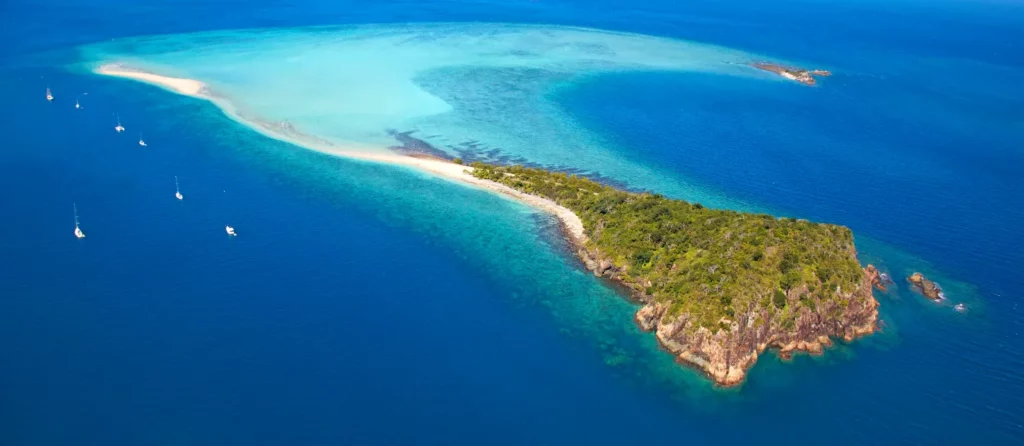
Human activities, such as tourism, contribute to the damage by touching and damaging the reef, leaving behind rubbish, and contaminating the waters with pollutants. Pollution from farm run-off, accounting for 90% of the pollution, also poses a significant threat by poisoning the algae that feed the reef. Overfishing disrupts food chains and destroys habitats by fishing boats, nets, and oil spills, further exacerbating the problem.
Half of the reef has deteriorated since the 1980s, and more than 50% of the coral has bleached or died since 1995. The loss of a large portion of the Great Barrier Reef could have catastrophic consequences globally.
The Great Barrier Reef offers an out-of-this-world marine paradise that awaits your exploration. Immerse yourself in its pristine waters and witness the abundance of life thriving within its coral colonies. If diving with the world’s most iconic sea creatures is on your bucket list, then the Great Barrier Reef is where you can fulfil your dreams. Start your journey today, grab your mask, snorkel and swim fins, dive in and experience all the magic!






